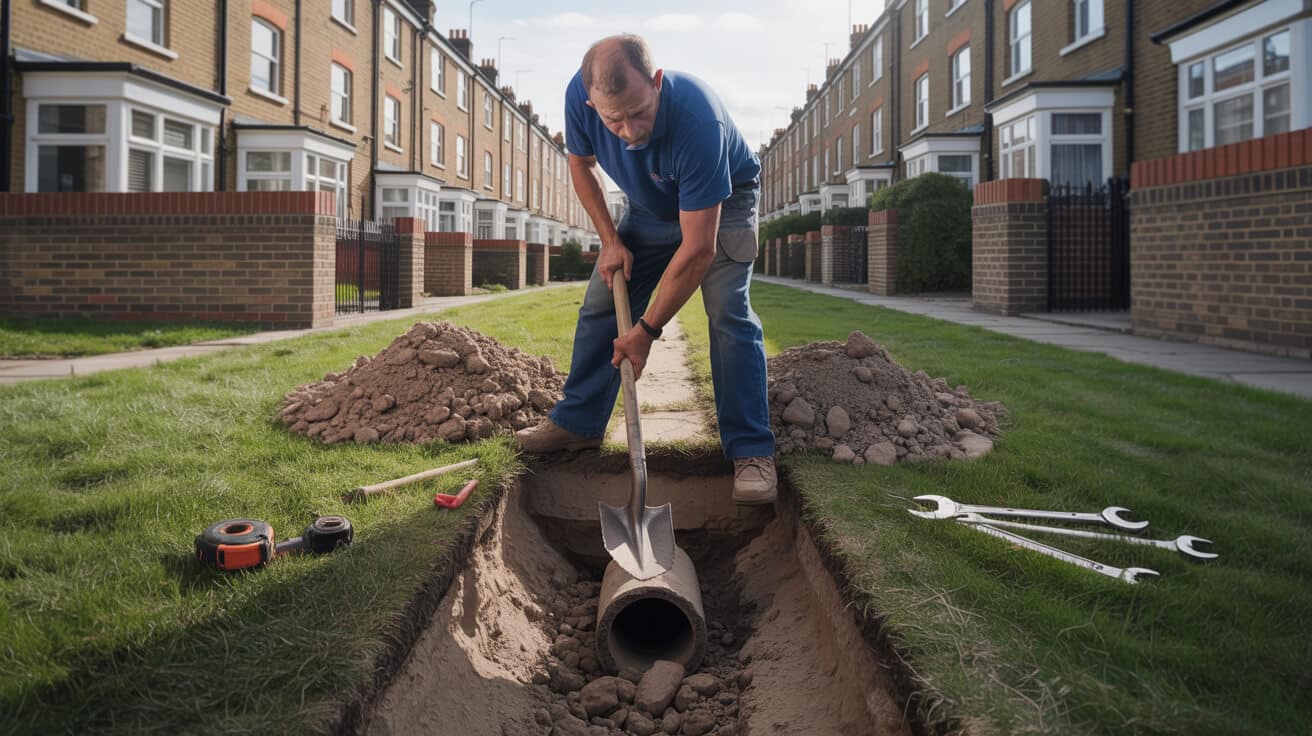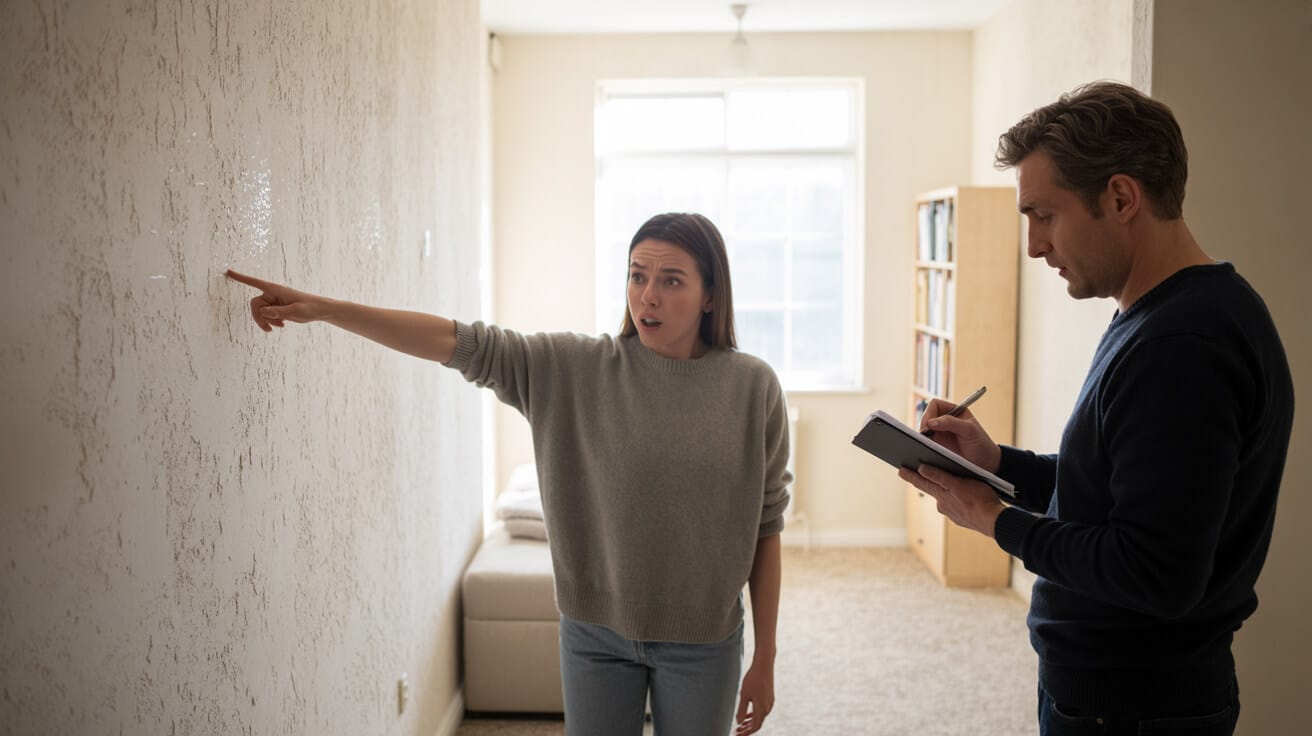 Modern Home Heating Smart VS Traditional Controls
Modern Home Heating Smart VS Traditional Controls

Why Should Property Owners Even Bother Upgrading to Smart Heating—Is It Truly Worth the Swap?
Most properties run on “set and hope” heating—manual thermostats, basic programmers, or dial-a-time boxes that ignore how you actually live and work. Dead zones, chilly starts, wasted heat in empty rooms, or costly callouts? That’s the standard reality for UK homes, landlords, and commercial spaces. The question is: are you running your building, or is your heating system running you?
“Your property’s heat shouldn’t be a negotiation—comfort should just happen, quietly, and without regret.”
Old controls are built for another age. They don’t care who’s in the building, when tenants swap over, or how often work-from-home days merge with weekend routines. Whether managing a semi-detached, a flat-share, or an office space, that leaves you watching the calendar, dreading winter bills, and fielding complaints about temperature swings.
The Immediate Tension Property Owners Feel
- Lack of control: —You want certainty, not the slow stress of wondering if last night’s heat was on all night.
- Unpredictable costs: —Bills spike, sometimes with no explanation.
- Compliance worry: —Landlords fear missing paperwork, hidden legal gaps, or invalid insurance after a “DIY” tweak.
Smart heating isn’t “just” an app—it’s a way to outsmart these silent, costly headaches. These systems cut out the guesswork, the drift, and that nagging sense you’re missing a trick your competitors already use. If your tenants, inspectors, or business partners ever asked “why is it still freezing?”—you know why upgrades like this matter.
How Plumbers 4U Flips the Script
Plumbers 4U sets the bar by swapping “set and hope” with “set, learn, and never look back”. Your heating works for you, not the other way round. Trusted by 10,000+ UK properties—owned, rented, managed, or delegated—our process guides you from confusion to smooth, worry-free comfort.
How Do Smart Heating Controls Actually Work—And What’s The Real Difference Compared to Old Setups?
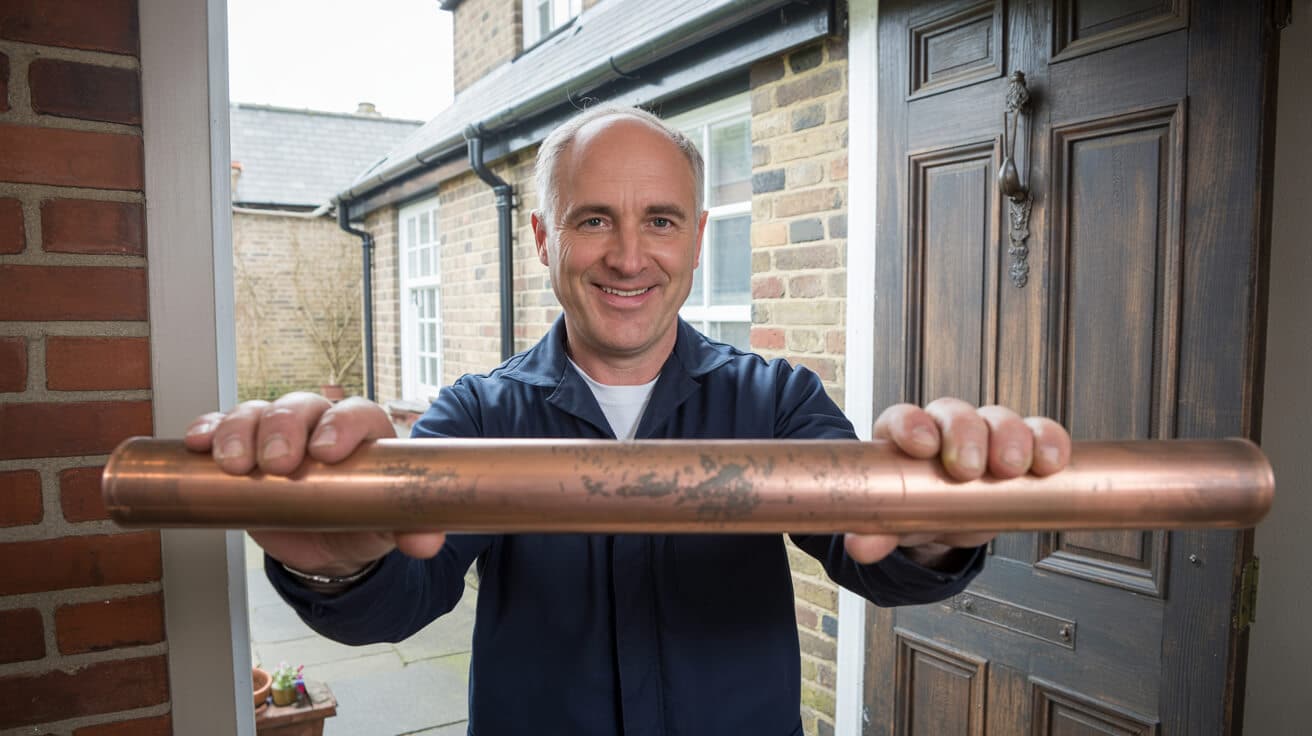
Smart heating controls reinvent the basics, layering intelligence on top of every decision. Traditional thermostats are blunt tools: they flip the heat by the clock (if you remember to set it) and offer no memory, learning, or context. True smart controls, armed with sensors, apps, and learning algorithms, bring a different game.
Direct Answer: Smart heating controls automatically learn and adjust to your building’s rhythm, activating only when, where, and how warmth is truly needed. They don’t just “follow orders”—they anticipate them—protecting comfort, slashing waste, and adding a new layer of peace-of-mind for you.
“Automatic comfort is no luxury—it’s smart engineering, on your terms.”
Key Features That Stand Out
- Zoning: No more overheated bedrooms or underused meeting areas—every room gets precisely what’s needed.
- App/Remote Control: Edit schedules or check comfort from anywhere—your mobile rules, not the wall panel.
- Learning Behaviours: The system “notices” when people leave, stay late, or routines change. No need to manually boost a timer or wonder if you’ve left the heat roaring.
- Weather Response: Pulls data from forecasts and sensors to dial back (or up) heating as cold snaps or sunny spells swing in.
The Payoff: Measurable Results
Properties moving to smart controls report 8–15% lower heating bills with the same, or better, comfort when systems are matched to the way the building is used (moneysavingexpert.com; vaillant.co.uk). For landlords and agents, that’s fewer tenant complaints—and for managers, more predictable outgoings and staff satisfaction.
Smart isn’t just “gadget nice”—it’s a smarter experience, engineered to restore your control.
Can Every Home or Building Adopt Smart Heating, or Are There Pitfalls to Know First?
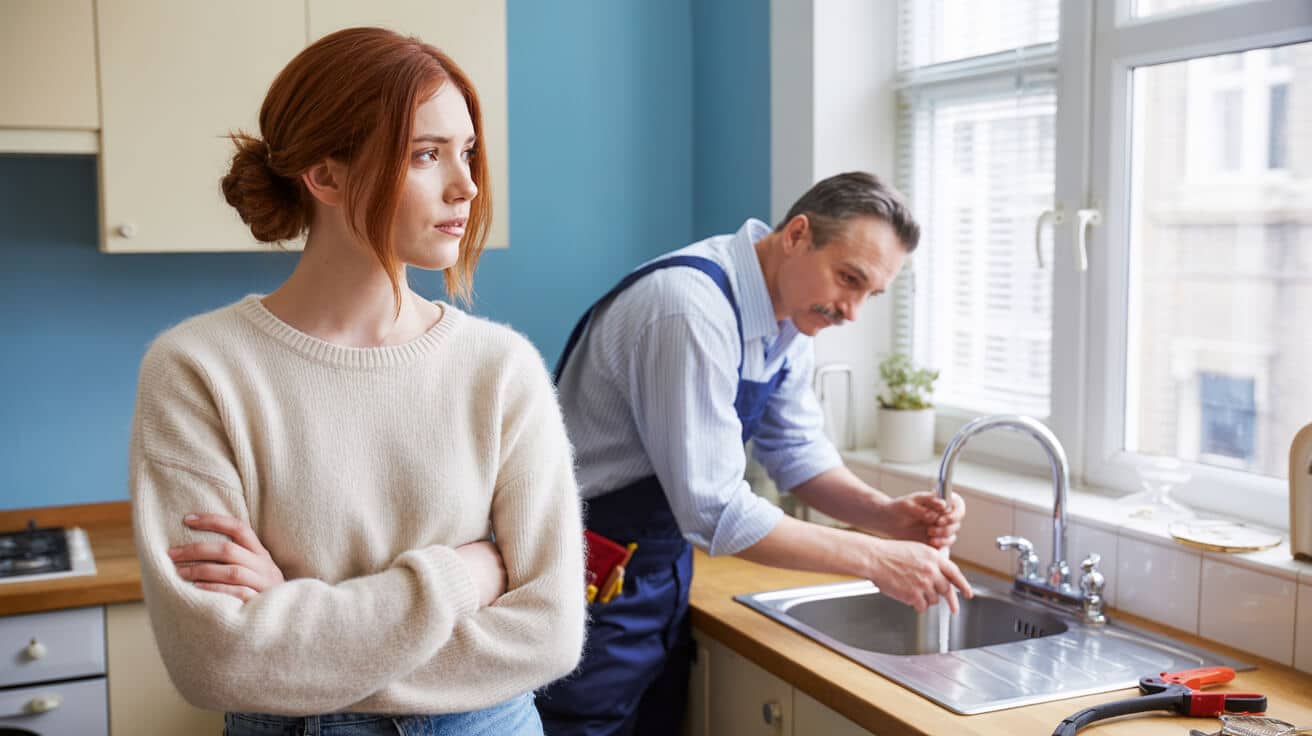
The truth? Nearly every property is now a solid candidate, but success depends on kit, wiring, and upfront know-how. “Plug and play” is rare; compatibility is everything. The path is smoothest for newer systems, but there’s always a solution with the right diagnosis.
“What holds most upgrades back isn’t the age of the boiler or controls—it’s missing what’s behind the cover.”
Main Factors to Target
- Boiler and System Type: Is it a combi, regular, or system boiler? Heat pump or hybrid? That answer shapes your path.
- Wiring Realities: Older homes (pre-2000) may lack neutral or live wires at stat locations. Battery-powered or wireless options often help, but expert review matters.
- Control Protocols: Some modern boilers use digital “bus” systems (OpenTherm, Vaillant eBUS)—using a basic “on/off” stat with these wastes savings.
Table: Property and Boiler Smart Compatibility Mini-Map
| Boiler/Building Type | Wiring Scenario | Control Protocol | Installer Tip |
|---|---|---|---|
| Modern combi/system (<15yrs) | Battery or mains | On/off, OpenTherm | Most kits work—just match brand/protocol |
| Older/gravity-fed (pre-2000) | Mains only or none | On/off only | Needs survey—often needs wiring upgrades |
| Heat pump/hybrid | Digital, zoned | OpenTherm/Bus/Custom | Match controls carefully; site visit vital |
| Multi-boiler commercial | Brand interface | Proprietary bus | Mapping/survey; involve pro from start |
Compliance: Non-Negotiable For Owners/Managers
Landlords, agents, and managers need proof—not just for insurance, but for EPC, MEES, and grant claims:
- WRAS for water hardware:
- G3 for unvented cylinders:
- GasSafe for boilers:
- Digital logs for rental folders or asset management:
Plumbers 4U always runs a pre-quote review—photos, wiring check, and compliance snapshot—removing risk, protecting warranties, and keeping every property audit-ready.
Should You DIY a Smart Heating Instal, or Is a Professional Always Best? (And What’s the Cost of “Nearly Right”?)

Manufacturer adverts promise “10-minute instals”—but real heating systems and British regulations make this rarely so. Yes, swapping a single old battery stat for a Wi-Fi version can be DIY’d by practical property owners. But multi-zone, app-controlled, OpenTherm, or multi-system setups? That’s where DIY cheer turns to expensive regret.
“A rushed instal can cost you more in one missed wire than years of paid bills ever would.”
When DIY Is Plausible
- Direct swaps—like-for-like wall stats, same voltage and wall plate.
- No mains wiring exposed—battery devices only.
When Pros Are Essential
- zoning, OpenTherm, hybrid/heat pump, or underfloor integration required.
- Complex buildings (multi-tenant, offices, or public access).
- Insurance, warranty, grant, or EPC paperwork required.
- Compliance—new builds, rentals, or commercial.
Checklist: Know When to Call Plumbers 4U
- Unsure about which wires do what, or what protocol is running.
- Property is a let, managed/communal, or business premises; compliance is law.
- Old controls are acting up, or mixing timer/programmer and stat wiring.
- Any modern system (<10 years) with a digital controller or eBUS spec.
Our engineers: always isolate, wire to British standards, use WRAS and G3-approved kit, log every instal, and provide user demo and documentation. Shortcutting these steps can cost you the lot—boiler, compliance, and future resale or EPC status.
Does Smart Heating Actually Change Day-to-Day Life, or Is It Just an Expensive Gimmick?

The big shift is this: you stop thinking about your heating—and it quietly gets it right. If your old setup means racing home to cold air or getting blamed for a tenant’s frosty morning, smart delivers real-world comfort, fewer complaints, and simpler management.
“You don’t have to babysit your warmth—just set it and live.”
What Owners, Managers, and Landlords Report
- Automated comfort: Zoning means every space gets what’s needed, not one generic setting.
- Smoother bills: The system ramps up or down based on presence, weather, or learning—no more “I forgot to turn it down.”
- Instant access: Adjust from your phone, check system status, spot issues before they become emergencies.
- Reduced callouts: Far fewer “it’s too cold/hot” complaints.
When Does It Not Pay Off?
- If property use is very routine, or residents dislike technology.
- For old “gravity” systems where wiring upgrades are extremely costly.
In these cases, a high-quality, reliable programmable stat—professionally fitted—is safer, compliant, and user-friendly.
Does Traditional Heating Control Still Have a Place—or Is “Dumb” Now a Dirty Word?

Not every system needs to be smart. There’s wisdom in knowing when “manual” wins:
- Older systems, with wiring that’s difficult or costly to upgrade.
- Properties with large numbers of guests/users—hotels, public venues, or shared spaces.
- Residents who prefer “set and forget” with simple physical dials.
“Sometimes, reliability and clarity matter more than tech headlines or new features.”
Modern professional instals, even with traditional controls, ensure:
- Proper placement and calibration for real results (not just “it’s off or on”).
- Hands-on training for users.
- All compliance certificates and installation logs for safety and future value.
With Plumbers 4U, you get best-in-class whatever route you take—genuine kit, no guesswork, no silent failures.
What Smart Features Actually Deliver Long-Term Value for Your Property—Not Just Short-Term “Wow” Factor?
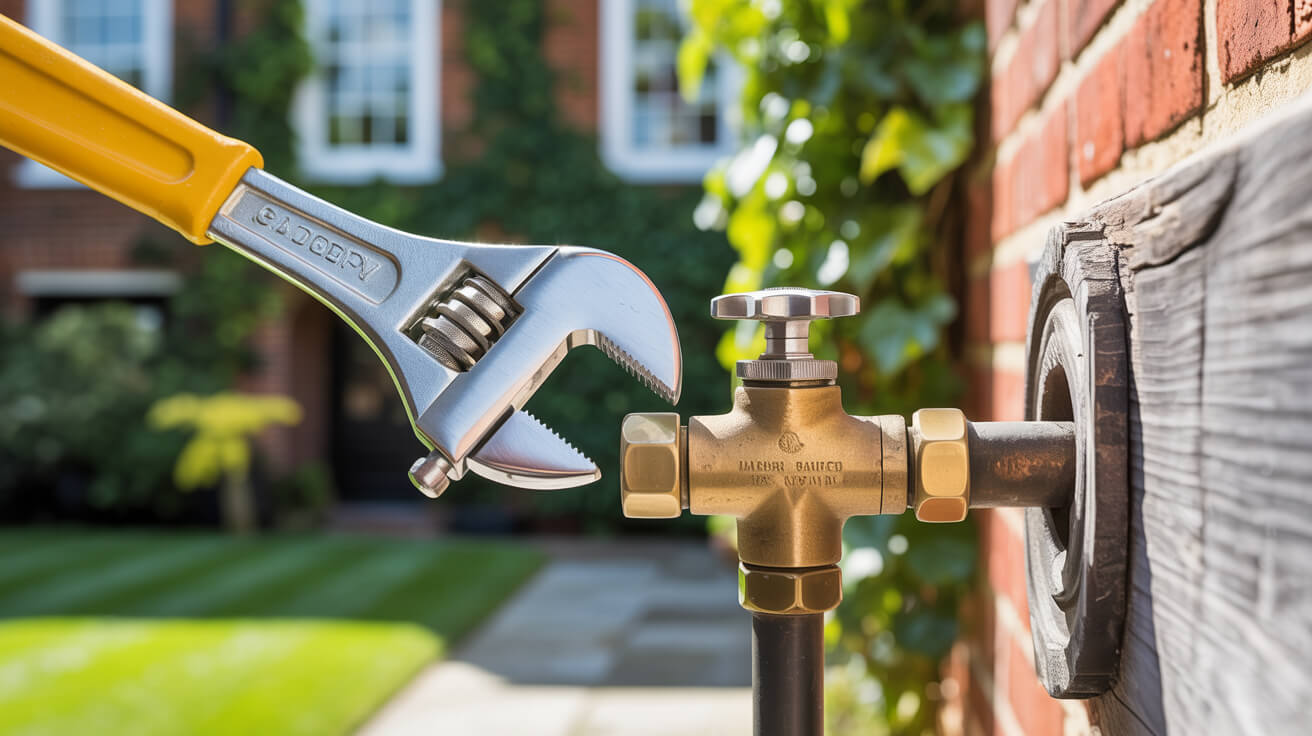
Trend-chasing is no use when grant eligibility, future EPC ratings, or legal compliance are on the line. Ignore flash, focus on the features driving resale value, energy savings, and legal protection down the line.
- Voice/Alexa/Google control: Inclusivity and accessibility for all ages.
- Geo-fencing: System knows when to warm up or back off, hands-free.
- Digital modulation (OpenTherm/bus): Deepest savings and more even temperatures.
- Modular expandability: Add zones, UFH, or smart sensors without future headache.
- Rich reporting: See usage, spot issues, and document for EPC or grant proof.
- Remote firmware updates: Instantly future-proofs your setup as rules and insurance guidelines evolve.
- Fully documented compliance: G3, WRAS, MEES, and GasSafe logs—no paperwork lost when you need proof most.
“Smart is smart because it removes tomorrow’s stress, not because it steals headlines.”
Brands like Hive, Nest, Tado, and Drayton top market share, but the key is matching kit to property, support level, and installer savvy.
What’s the Trusted Pathway for Upgrading Heating Controls—From First Call to Warmth That “Just Works”?
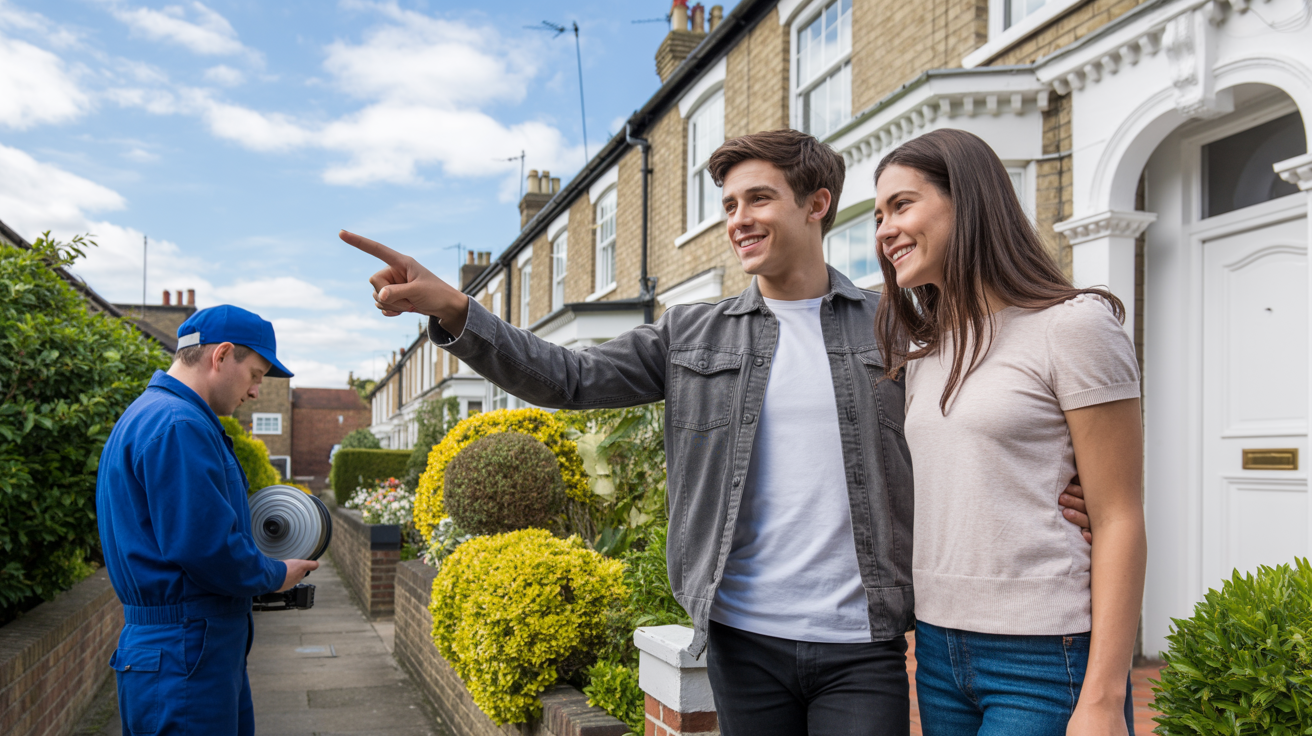
Every smooth upgrade follows a few essential steps. Rushing breeds regret; a mapped-out workflow saves money, time, and compliance grief.
The Stepwise Approach
1. Discovery
Share a photo, brand, or wish-list. Our qualified engineer maps what’s possible.
2. Compatibility/Codes Check
We review all kits, wiring, safety, and compliance (WRAS, G3, GasSafe, EPC, MEES)—on-site, or often from a well-angled photo.
3. No-Surprise Quote
Get a clear, all-in price and timeline. Every warranty, cert, or setup info included.
4. Flexible Instal — Real Training
You pick a time. We fit—usually inside two hours. Every user gets live tuition, app demo, and cheat-sheets.
5. Aftercare & Documentation
Receive all certificates, warranty papers, support contact, and quick-rescue guides. We keep digital copies on file. If you need proof, we’re your archive.
6. Ongoing Support
No ghosting. Phone, email, or return-visit: our job’s not done until you’re 100% comfortable—whether you’re a single homeowner, landlord, agent, or business manager.
How Does Plumbers 4U Deliver a Worry-Free, Legally Solid Upgrade Every Time?
From the first enquiry to the aftercare call, Plumbers 4U builds for trust, legal security, and “I never have to think about it again” satisfaction.
- Photo-first review: Send a snapshot or outline; receive an honest, jargon-free assessment.
- Full-spectrum compliance: Our team holds all the stamps (WRAS, G3, WaterSafe, CSCS, GasSafe, NVQ L3). Every instal logged and benchmarked.
- In-person training: No “manual-only” handovers—your users leave confident, not confused.
- Inclusive pricing: No “surprise” extras for paperwork, aftercare, or out-of-hours help.
- Visible track record: Over 10,000 live instals, constantly rebooked, plus glowing trade and client reviews.
- Lifelong support: We stay reachable—questions, updates, paperwork—all resolved by a real human, not a chatbot.
“Peace of mind isn’t an add-on; it’s built into every step, every certificate, and every callback.”
Why Owners, Managers, and Agents Trust Plumbers 4U
- Independent credentials—no cut corners, no “off brand” kit or quick fixes.
- Everything documented and audit-ready, supporting grants, insurance, and smooth tenancies.
- Real, transparent aftercare: you get proactive reminders, clear phone or email support, and optional annual check-ins.
- The service is tuned for people—not just “systems”.
Ready to Future-Proof Your Comfort, Bills, and Legal Peace of Mind? Book With Plumbers 4U Now
Your property isn’t a testbed for guesswork. It deserves a heating solution that adapts, anticipates, and emboldens comfort—one installation, years of value. With Plumbers 4U, you get best-in-class engineering, compliance, transparency, and user happiness—backed by credentials and a real-world track record.
Here’s how simple it is:
- Snap a photo or list your needs: —our certified engineer responds with field-tested insight, not a generic reply.
- Review options: —whether you value control via phone, voice, or auto-schedule, you’ll get concrete recommendations with line-by-line clarity.
- Quote and plan: —hours that suit, all kit included, every compliance doc built in.
- Professional instal: —no corners cut, every feature demoed, and no user left in the cold.
- Post-instal care: —digital and paper quick-start sheets, phone/email for any follow-up, all warranty paperwork ready for grant/EPC use, and no fine print.
“The right heating system makes itself invisible. The right installer makes you unstoppable—comfortable, secure, and always a step ahead.”
With Plumbers 4U, you’re future-ready: bills in check, comfort on command, compliance a non-issue. Whether you own, manage, let, or oversee, this is the right move—for every season, every standard, and every peace of mind.
Frequently Asked Questions
How does adopting smart heating controls transform property management, compliance, and liveability in the UK today?
Smart heating controls empower you to manage warmth, costs, and legal responsibilities simultaneously—right from your phone or laptop. By providing real-time oversight and automating settings based on occupancy or environmental trends, these systems reshape how responsibility feels: compliance proof is generated as you go, comfort adapts to shifting routines, and you reduce both admin and energy waste without constant supervision.
The real shift isn’t about gadgets—it’s about gaining a buffer against legal slip-ups, utility bill hikes, and frustrated tenants or staff. When temperature logs, controller events, and service credentials are all tracked automatically, compliance with MEES, EPC, G3, and insurance stipulations becomes a passive benefit. This is particularly game-changing for portfolio landlords, facilities managers, or local authorities tasked with overseeing varied sites or vulnerable tenants: smart heating upgrades let you multiply your reach instead of your stress.
The most agile property owners aren’t just reacting to complaints—they’re setting the standard before regulations change.
Where do these benefits surface most dramatically?
- In multi-unit buildings where required comfort levels (or heating cut-offs) can be scheduled, logged, and audited for every flat without site visits.
- When rapidly rotating tenancies or frequent voids would otherwise run up avoidable bills or miss heating targets.
- During licencing or grant reviews: instant export of temperature and service records replaces days of manual back-filling and earns compliance points.
- For owners keen to demonstrate proactivity to insurers, investors, or local authorities—removing guesswork from every conversation.
How can adaptive heating strengthen your reputation?
By showing live proof of duty-of-care, fast response to issues, and a readiness for tightening compliance, your properties become genuinely “low risk” assets—more dependable, more insurable, and more attractive to future tenants or buyers.
What legacy of traditional thermostats and programmers still lingers—and what exposure does it create if left unchanged?
Analogue dials and legacy timers hold their ground when simplicity, cost, or building constraints overrule digital advances. Historic homes, listed flats, or property portfolios in mid-renovation might resist change for good reasons—compliance with conservation rules, tenant tech-anxiety, or major projects on the horizon.
But the gap is closing fast: as licencing, MEES, and EPC audits demand not just settings but proof, every unlogged period becomes a vulnerability. With no digital log to “prove the heating was on” or record critical temperature events, you risk disputes over cold claims, missed paperwork for rental or sale, and inability to unlock grants. Physical walkarounds and manual note-taking also raise operational overheads—especially for absentee landlords, letting agents, or facilities teams with multiple properties on their watchlist.
Routines that once felt good enough now quietly leave you exposed every audit cycle.
In which situations do traditional controls still pull their weight?
- Listed buildings or heritage sites with strict restrictions against new wiring or visible changes.
- Very small lets with occupants who cannot or will not use digital devices—where “set and forget” is more practical.
- Property undergoing renovation within the next year, where double-spending on controls makes no financial sense.
- Temporary setups for properties soon exiting your portfolio.
What recurring friction emerges with basic controls?
Manual resets with every new tenant or operational change, risk of bills spiralling during unoccupied spells, and mounting paperwork strain to demonstrate compliance or comfort if any party challenges your practices.
What technical or regulatory barriers might block a smart heating upgrade, and how can these be resolved proactively?
Obstacles to smart heating adoption usually fall into three buckets: outmoded wiring, brand-locked boilers, and system complexity. By addressing each up front, you avoid half-completed upgrades or failures at inspection time.
Wiring: Older homes, especially those built before the mid-1990s, often lack a neutral wire at the thermostat point. This limits compatibility with many hardwired smart stats. Solutions include battery-powered or wireless thermostats—these can sidestep the problem entirely if selected and installed appropriately, but compatibility must be checked first.
Boiler Protocols: Some boiler brands (including Worcester Bosch and Vaillant) use their proprietary communication for controls, so not every “universal” thermostat works. Fitting these may need brand-specific add-on modules or wiring tweaks—and skipping protocol checks risks non-functional or warranty-void instals.
Systems with Multi-Zoning or Underfloor Heating: Complex setups can involve additional wiring, specialist manifolds, or zoning relays—bringing Part P electrics, G3, and WRAS into the frame. Only a certified technician can set these up for both function and legal compliance.
A swift expert survey saves months of chasing refunds, replacements, or compliance sign-off.
Which actions ensure a smooth upgrade?
- Share photos of current thermostat wiring or boiler make/model with a certified installer—leading firms offer this service digitally.
- Verify protocol compatibility before purchase, especially for manufacturers known for “closed protocol” systems.
- Involve a certified engineer for properties with more than one heating zone or underfloor heating.
- Budget for minor electrical works or opt for fully wireless options depending on system limitations.
How does a smart heating investment directly alter utility costs, grant eligibility, and occupant experiences?
Smart controls have moved from “nice to have” to proven asset: controlled UK trials and published studies consistently find a reduction of 8–18% in annual energy use across family homes, HMOs, and commercial buildings after modern systems are implemented. In cash terms, this is often £120–£300 saved per property per winter.
Crucially, real savings aren’t limited to just better timing—they emerge from temperature optimization, zoning, and aligning heating with actual use patterns (especially during voids or between shifts in commercial buildings). Compliance friction drops off as temperature logs and audit trails are generated passively. Owners dodge insurance headaches and licencing delays because every key action—heating on/off, maintenance checks, occupancy adjustments—is logged and ready for inspectors.
It’s not just about lower bills—it’s about freeing you from admin cycles, lost rental days, or legal pushback over comfort claims.
Which buildings see the greatest ROI or comfort uplift?
| Typical Savings (%) | Added Compliance / Comfort Benefit | |
|---|---|---|
| Family semi/detached | 8–15 | Faster MEES/EPC upgrades, “cold room” complaints fall |
| HMOs/let flats | 10–18 | Dispute rates fall, easier grant access |
| Commercial units | 12–22 | Flexible heating by zone and time of day |
Smaller, older, or very poorly insulated properties see more modest efficiency gains, but even these recover costs via reduced compliance burden and insurance premiums.
What outcomes will tenants and staff notice straight away?
- Consistent, scheduled warmth—fewer comfort complaints.
- Lower “shoulder season” bills as empty rooms or areas aren’t overheated.
- Quick engineer support or app-based troubleshooting, rather than waiting for a manual fix or site visit.
Which mistakes or short-cuts undermine a smart heating upgrade—and what does real “futureproof” look like?
Half-done upgrades cost twice as much in the long run. The most common pitfalls: skipping survey stages, mismatching controls to boiler protocol, forgoing digital commissioning paperwork, or underestimating zoning complexity.
Typical fails include:
- Installing a generic smart stat on a brand-locked boiler (e.g., Worcester Bosch OpenTherm required, “universal” stat incompatible)—necessitating another call-out and extra parts.
- Attempting DIY fit in older homes—missing or miswiring neutral wires, resulting in unresponsive controls or failed audits.
- Omitting extra modules or relays for zones/underfloor, so only part of the property is under smart control.
- Neglecting to obtain or store WRAS, G3, or digital logbook certification—leaving compliance unprovable even if equipment is top-tier.
The difference between a brittle gadget and a lasting improvement is the combined force of right-kit, right-tech, right-paperwork, right-service. A certified, seasoned installer will supply all four seamlessly.
The edge is never the device itself—it’s the integration, proof, and aftercare package that multiplies value over time.
What is the resilient, audit-ready recipe for smart heating upgrades?
- Begin with a documented compatibility survey (digital or in-person).
- Demand a detailed quote itemising all system parts and certification.
- Insist on WRAS, G3, MEES/EPC, WaterSafe, Part P paperwork and secure logbook storage.
- Ensure hands-on app demos and multi-user onboarding.
- Confirm a single contact for future compliance, zone upgrades, or grant access—never left alone with “helpline dead-ends.”
Which compliance and documentation standards in 2024 make the digital-first approach non-negotiable for serious property professionals?
Regulatory bodies and grant schemes have set a new baseline: digital controls with live logs and full commissioning evidence are rapidly becoming the only accepted proof for key standards (MEES, EPC, G3/WRAS, WaterSafe, Part P, Boiler Plus). Landlords and managers are now regularly required to supply not just paper certificates, but digital logs of heat delivery, temperature safety, and serving device identity before licences, grants, or insurance activates—or renews.
This is especially pronounced for those pursuing grant upgrades, licencing, or future redevelopment. Local authorities and national grant panels now set “automatic logging” as a minimum threshold for most new awards. If your controls and documentation aren’t upgradeable, integration with new tech or tighter laws becomes a much bigger project down the line.
Compliance once played catch-up—now it leads the market. Properties with digital-ready controls stay sellable, let-able, and insurable while others scramble.
What is now expected as “basic” by auditors and grant panels?
- All-in-one commissioning and service logbooks linked to each address and controller.
- Digital handover, onboarding record, and firmware verification—a gap could block future upgrades or claims.
- MEES/EPC-ready instals as standard, with WaterSafe/Part P signoff on all relevant kit or wiring.
- One-stop aftercare: a known engineer or team to supply any new certificate or expansion as regulations move.
How do these changes raise the bar for owners and operators?
Properties showing readiness today set the rental, sale, and asset value benchmarks of tomorrow. Delaying means catching up not just on controls, but also documentation, audit cycles, and operational costs.
Why do Plumbers 4U installations stand out for peace of mind, compliance readiness, and future scalability?
Plumbers 4U has built expertise where digital and mechanical skills meet, proven across over 10,000 UK instals of every size and age. Their process is designed so you’re never left guessing: from a free digital survey (photo or in-person), you get clear documentation on protocol fit, system limits, and upgrade paths. Transparent line-item quotes eliminate fee-creep, while WRAS, G3, MEES/EPC, WaterSafe, and Part P paperwork is delivered automatically and securely.
After installation, you and your occupiers receive app guidance, live demonstrations, and immediate access to support for compliance or change requests—vital for local authorities, block managers, and hands-off landlords needing to react fast to new standards or tenant turnover. That human-led aftercare, direct to the installing engineer, means future-proofing is real—add zones, update for new grants, or retrieve paperwork with no drama.
The best instals don’t just fix problems—they empower you to seize every new opportunity, confident that your system can prove its worth to anyone who asks.
What distinguishes a Plumbers 4U smart heating upgrade?
- Scale-tested reliability: trusted for single homes, large HMO portfolios, commercial sites, and council redevelopments nationwide.
- Universal compliance: WRAS, G3, WaterSafe, GasSafe, and Part P credentials signed and sorted up front.
- Zero ambiguity: digital logbooks, onboarding files, and commissioning packs stored for you by property and controller.
- Direct aftercare: speak directly to your engineer for documentation, adjustments, or future compliance action—no call centre runaround.
- Adapt as you grow: designed to expand into new zones, heating types, or compliance regimes as standards evolve.
Your property deserves a heating system that delivers comfort, compliance, and confidence. Send a boiler or controller photo to Plumbers 4U and secure your free digital survey—start leading the market, not chasing it.

